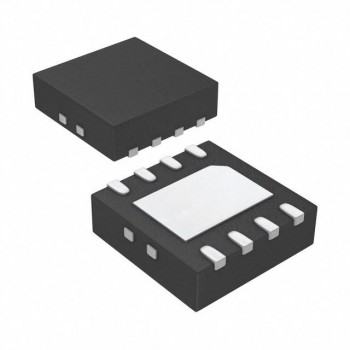In the field of power management, the BUCK-BOOST negative voltage converter is a common circuit topology and is widely used in situations where the output voltage is required to be higher or lower than the input voltage. TOPCHIP ELECTRONICS, a spot supplier of electronic components, will introduce you to the basic structure, working principle and application scenarios of BUCK-BOOST negative pressure converter.

1. Basic structure
The BUCK-BOOST negative voltage converter consists of three main parts: switching tube, inductor and output capacitor. In addition, it also includes auxiliary components such as control circuits, feedback loops and protection circuits.
-Switching tube: Mainly composed of power MOSFET tubes, used to control the switching state of the circuit. By adjusting the turn-on and turn-off time of the switch, the output voltage of the circuit can be adjusted.
-Inductor: The inductor plays the role of storing and transmitting energy in the BUCK-BOOST negative voltage converter. When the switch is turned on, the inductor stores the input power energy; when the switch is turned off, the inductor releases energy to supply the output load.
-Output capacitor: used to smooth the output voltage, reduce the ripple and noise of the output voltage, and improve the stability of the circuit.
2. Working principle
The working principle of the BUCK-BOOST negative voltage converter can be divided into two stages: the boost stage and the buck stage.
-Boost stage: When the switch tube is turned on, the inductor stores the input power energy and the output capacitor voltage rises. At this time, the output voltage is higher than the input voltage.
- Buck stage: When the switch tube is turned off, the inductor releases energy and the output capacitor voltage drops. At this time, the output voltage is lower than the input voltage.
By adjusting the working state and working cycle of the switching tube, precise control of the output voltage can be achieved. The control circuit monitors the output voltage and compares it with the reference voltage to adjust the working state of the switching tube to achieve a stable output voltage.
3. Application scenarios
BUCK-BOOST negative pressure converter has a wide range of application scenarios, including:
-Battery charger: In fields such as mobile devices and electric vehicles, BUCK-BOOST negative voltage converters can be used to design efficient battery chargers to charge batteries of different types and voltages.
-Power adapter: In electronic products, BUCK-BOOST negative voltage converters can be used to design compact and efficient power adapters to meet different voltage and power requirements.
-LED driver: In the field of lighting, BUCK-BOOST negative voltage converter can be used to design efficient LED drivers to achieve precise control and adjustment of LED lamp beads.
-Solar photovoltaic system: In the field of renewable energy, BUCK-BOOST negative voltage converter can be used in solar photovoltaic systems to achieve stable control and optimization of the output voltage of solar panels.
4. Summary
As a flexible and efficient power management solution, BUCK-BOOST negative voltage converter has important applications in various electronic equipment and systems. Its basic structure is simple, its operation is stable and reliable, it can realize flexible adjustment of input voltage, and is suitable for various input and output voltage range requirements. By in-depth understanding of the principles and applications of BUCK-BOOST negative voltage converters, we can better understand its importance and advantages in the field of power management, and provide more reliable and efficient solutions for circuit design and applications.

